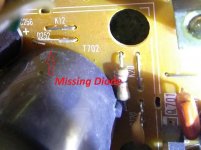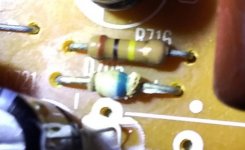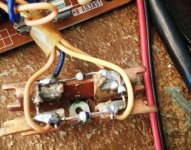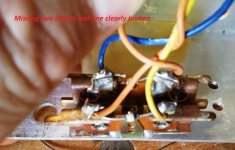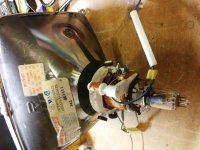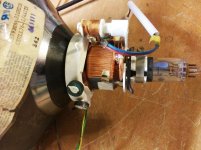VERAULT
Veteran Member
- Joined
- Jan 30, 2012
- Messages
- 9,999
I recent bought two Apple IIc monitors (A2M4090). Both in different states of neglect. I was able to get one of the monitor boards working perfectly. If I connect one of the CRT tubes It displays fine; I can make adjustments as needed. When I connect the other CRTs (which is the bare CRT and deflection yoke only) The picture is mashed up and really bizarre. See here: 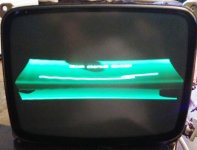 The image displayed is the "Check Startup Device" from an apple IIGS. If I try and tweak the adjustment pots I cant resolve the picture. Its squeezed and rolled over and the eges have these 3 collapsed portions. Even the line of the apple swinging back and forth is wavy on the left side of the screen.
The image displayed is the "Check Startup Device" from an apple IIGS. If I try and tweak the adjustment pots I cant resolve the picture. Its squeezed and rolled over and the eges have these 3 collapsed portions. Even the line of the apple swinging back and forth is wavy on the left side of the screen.
I circles the areas I mentioned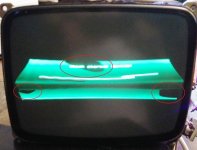
Sorry for the grainy images, lighting wasn't good where I was working.
Could it be an issue with the magnets? Maybe some fell off? Again my other CRT works perfectly fine on this board.
 The image displayed is the "Check Startup Device" from an apple IIGS. If I try and tweak the adjustment pots I cant resolve the picture. Its squeezed and rolled over and the eges have these 3 collapsed portions. Even the line of the apple swinging back and forth is wavy on the left side of the screen.
The image displayed is the "Check Startup Device" from an apple IIGS. If I try and tweak the adjustment pots I cant resolve the picture. Its squeezed and rolled over and the eges have these 3 collapsed portions. Even the line of the apple swinging back and forth is wavy on the left side of the screen.I circles the areas I mentioned

Sorry for the grainy images, lighting wasn't good where I was working.
Could it be an issue with the magnets? Maybe some fell off? Again my other CRT works perfectly fine on this board.


